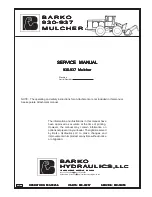
5 Insulation Resistance Checks
There is no requirement to null the test leads for insulation resistance test checks. The
FC2000 can be used to check insulation resistance testers across the voltage range. This
enables the test instrument to be checked on the 250V, 500V and 1000V settings.
• The null terminal for the insulation resistance values is also the common terminal used
for the insulation resistance checks.
• One test lead for the instrument to be tested is connected to this common terminal.
• The other instrument lead is connected to the 0.5MΩ terminal.
• The appropriate resistance scale and test voltage are selected on the instrument being
checked.
• The insulation resistance tester is then operated in the normal way.
• The measured value obtained is recorded on the test instrument record sheet.
• The same procedure is followed for the 2MΩ and 200MΩ values.
• These same tests may then be repeated for each test voltage if required.
The measured values obtained are compared with the Reference Values to assess the
performance of the instrument over time.
• If the measured values are found to be within the manufacturer’s tolerance then the
instrument is suitable for continued use.
• If any of the measured values are outside the manufacturer’s tolerance then the
instrument will need to be returned for calibration.
Refer to section 4.4 for examples of how to apply tolerances.
6 Earth Fault Loop Impedance Checks
The FC2000 provides a facility to check the accuracy of earth fault loop impedance testers.
The socket outlet and the loop impedance switch in the FC2000 provide tests of:
• the FC2000 ‘local’ earth fault loop impedance
• the FC2000 ‘local’ earth fault loop with an additional 1Ω included.
• the FC2000 ‘local’ earth fault loop with an additional 100Ω included.
The FC2000 does introduce some additional resistance into the earth fault loop. As a result
the ‘local loop’ value from the FC2000 socket outlet will be slightly higher than the loop value
measured directly from the actual supply socket.
Remember: RCD protected circuits should not be used to supply the FC2000 where the
instrument to be checked does not have a ‘no-trip’ test option.
As the FC2000 will be used to check the accuracy of the instrument it is strongly advised that
both plugs (13A and IEC) used to connect the FC2000 to the supply and the 13A instrument
plug into the FC2000 socket are each inserted and removed several times before undertaking
the accuracy check. This process will help to reduce any additional resistance which may be
caused by tarnishing of the pins or socket tubes.
Note: Where the instrument being checked does not have an inbuilt on/off switch it is
recommended that the FC2000 is connected to a switched socket. The instrument must be
switched off when changing the earth fault loop settings on the FC2000.
Site Check
The FC2000 provides a fast check option for the earth fault loop impedance tester. This
enables the instrument to be checked on site to confirm the accuracy of the instrument
measurement. This site check consists of a measurement of the FC2000 local loop and then
the same measurement with 1Ω resistance added. And then again with100 Ω resistance
added. This will identify whether the instrument is accurately measuring the 1Ω and 100 Ω
increase. This check may be carried out at any suitable socket outlet.
• The FC2000 should be plugged into a suitable power socket and set to the ‘local loop’
setting.
• The earth fault loop impedance tester is then plugged into the FC2000 socket outlet
and the test carried out in the usual way. The measured value is recorded.
• Either the test instrument or the supply socket is then switched off for a period of 5
seconds.
• The FC2000 loop impedance switch is moved to the +1Ω position.
• The instrument or supply socket is then switched on.
The earth fault loop impedance test is then carried out in the usual way. The measured value
is recorded on the instrument record sheet.
























